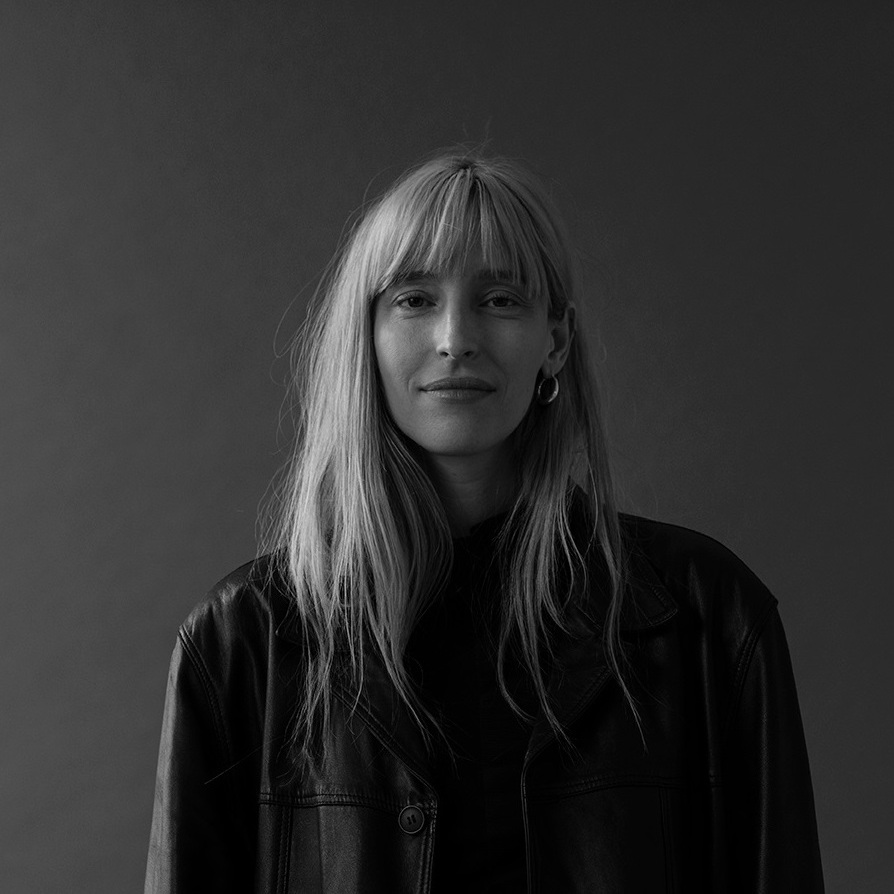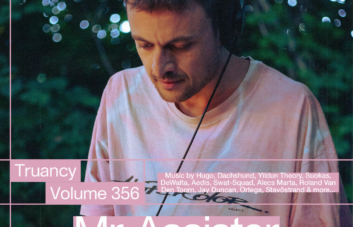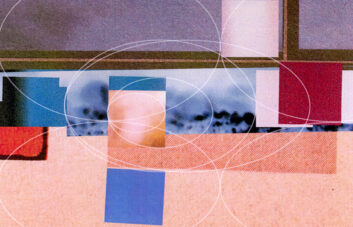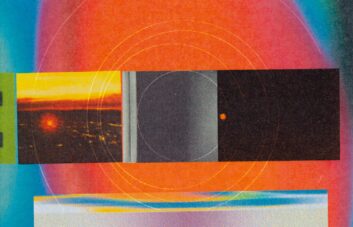Carmen Villain has carved a particular niche for herself over the past few years. Having released music for a decade now, mostly on Oslo mainstay Smalltown Supersound, she’s shifted her sound from dreamy, guitar-led (but nonetheless atmospheric) indie-pop into her own realm of refreshingly distinctive ambient sound art. This shift kick-started with 2019’s Both Lines Will Be Blue, which combined lush and expansive soundscapes with the gorgeous flute sounds of her collaborator Johanna Scheie Orellana. There followed a piece on the well-regarded Longform Editions label, again with Scheie Orellana, and most recently, a release for Geographic North. Named for her grandmother, Sketch for Winter IX: Perlita is a step further into the ether, music suspended in time and fascinating in its resistance to classification. We spoke to Carmen Villain about her pandemic activities (of course), her various collaborations and connections, and how she found herself finally getting comfortable in the electronic music world.
You mentioned doing lots of Zoom calls, is that for music? “No, actually. So, I decided to start studying during Corona. So I’m doing a history and English degree and some teaching thrown in too. So right now I’m doing a lot of English stuff.” So there’s a lot of reading? “A lot of reading.” Any highlights? “In the fall, one of the courses was American civilisation history and it’s just so dark, by the end of the year it was like AGGGGH, I hate this fucking country’s history. It’s extremely interesting but it’s also extremely infuriating, when you combine the endless stream of terrible current affairs and the past. Now I’m on British civilisation history, which is a bit heavy at the moment because there’s a lot of kings. And, literature, which is always great.” That’s interesting. “Well I’ve got to fill the days with something.” Yeah, was it boredom that led you to this? “No, I’ve spent most of my time in the studio as well. I’m really lucky, I have a little room to go to that’s not in my flat, so I go there as much as possible. I go whenever I have time, which is not often enough, but also I’m not very good at self-discipline.”
So the spur for this interview is the new release on Geographic North. How did you end up with them? I know you had a track on the Halloween compilation. This is part of the Sketch for Winter series, so was there anything particularly seasonal that inspired the music, or was that a kind of frame that you used? “I mean I don’t know, when I listen to it now I guess it does feel quite wintery but I don’t think I was consciously working at as a winter theme. I think that was a little bit later when Bobby [Power] and Farbod [Kokabi] heard the music, I guess they were like, ‘oh, this is great for the Sketch For Winter series’.” So it worked backwards. “Yeah, it actually went backwards, which is a bit weird, but all credit to them and their clever A&R-ing for picking up on it. They just emailed me out of the blue and asked me if I wanted to do something with them and I was like, ‘oh great this is a great label’.”
Your style has changed over the years; your earlier stuff was very, very different to what you have now, particularly the use of vocals. You don’t sing so much. What has led to that sort of development, do you think? “It’s hard to pinpoint exactly how and when things developed to where they are now, as I often don’t really know exactly what I’m doing until I’ve made it. It’s all very much based on intuition, I always just follow the idea and whatever kicks, you know makes me feel good about what I’m doing at the moment so, I guess it’s just a natural development or something. But in terms of how different things are now vs then, I had actually always made instrumental music from the beginning, but I really enjoyed writing songs back then. I guess I felt like I had some sort of things to get out of my chest vocally or something. So, it felt fine at the time. But then when I started (kind of) focusing more on instrumental stuff, like when I put together Both Lines [Will Be Blue], it felt really effortless. And it was just a really happy experience from start to finish. Some of the previous releases had been, at times, emotionally draining somehow, and I felt really lonely producing it. Putting together Both Lines just made me realise that I really enjoyed being able to just focus on all the stuff behind where the vocals would be. So, yeah, I feel like that’s kind of where I’m at right now.”
That album, I don’t know if this is completely off but something about it made me think of like Pacific Islands, there was just something, like sunrises and languid, imagining being on a beach in the middle of the ocean. What was the inspiration behind it or was there anything specific? “Not anything specific, I just listened through a lot of stuff that I had already made and then I was making lots of new music at the time that I felt really good about and then I felt like, ‘oh here’s some stuff that’s gonna work well together’ but they’re all from slightly different times and different frames of mind, places geographically. Recordings from a few different places in the world, and I wouldn’t say that a location of a recording necessarily inspires what a track is going to be about, it’s usually more about finding a texture that springs, or some harmonics for example, which then sparks an idea. I don’t really work with red threads or concepts of like, ‘oh this is what it’s going to be about’, I just have to follow whatever idea happens at the time and see where it takes me.”
What about the piece for Longform Editions, how did that come about? “Andrew [Khedoori] just emailed me and asked me if I want to do something for them. Obviously a great opportunity and chance to do that. So that was built on this piece that I already started working on before, Johanna [Scheie Orellana] who plays flute with me, we did this show at this mausoleum in Oslo, the Emanuel Vigeland mausoleum, I think it has like a 23-second reverb at lower frequencies and then like 15-seconds on mid-to-high. It’s an amazing room with all these frescoes of naked people and the cycle of life of like death and sex and giving birth, and it’s just amazing. It was a commissioned piece, and I thought part of the music was worth developing further.
“The mausoleum is not as well-known because his brother [Gustav Vigeland] is the one that made all the statues in the Vigeland Park. He was a very famous artist who got all these massive commissions. So the story is that Emanuel made this tomb, for himself. In order, I guess, to get revenge on his brother. It’s really funny because on the way in his ashes are above the doorway and the doorway is really low, and apparently he did it that way so that his brother would have to bow down to him. I love it.”
You mentioned Johanna, do you play flute as well yourself? “Nope, I wish.” You have pictures of you with the flute on Instagram. “I tried to play flute but it’s terrible. I’ve picked up the clarinet a little bit recently because I used to play when I was a kid in marching bands. Haha. To mixed results, but I can definitely use stuff.” So any time you hear the flute on your music it’s always Johanna? “If it’s an organic flute then it’s Johanna playing. but sometimes it’s something that I’ve created out of other flute sounds.” That’s the magic really isn’t it. “Johanna can get all the credit, though, it’s fine [laughs].”
I’m really interested in the fact that you said you didn’t like dance music before. Is that still the case? “Oh no, god no. I fucking love club music now. I don’t know what I was on about back then, and I’ll own my own ignorance. I think what I meant was, I wasn’t really listening to a lot of like club music. I was deeply into Sun City Girls and weirdo music and Royal Trux and stuff like that. But also I think it’s because I had this really weird and negative association with really bad dance music. And I associated that with terrible people. That’s really mean and horrible, but that quickly changed. I kept thinking about because you mentioned it in the email, I was like, what changed, but I think it’s just natural, I started listening to stuff and going, ‘oh my god this is amazing’. I mean for me, electronic music is where all the interesting stuff is happening. But, meanwhile also I’m still loving amazing songs, such as Jessica Pratt who’s always top.”
Was working with Smalltown Supersound part of your introduction to electronic music that’s actually good? “Sure. So, Joakim [Haugland] at Smalltown, he was like one of the first people I met, because when I first started making music in 2010 or whatever, I didn’t know anything about the music industry and didn’t know what Smalltown was and didn’t know who anyone was. I started recording the first album with this guy called Emil [Nikolaisen] and he introduced us and then Joakim just liked it and wanted to put it out. Not really a very interesting story to be fair.” Well sometimes that’s just how it happens! “Yeah, I guess. So that was a great experience, and then we just kept working together. There’s a lot of amazing electronic music on Smalltown, so I guess that also must have helped in showing me the way towards the light.”
Another thing, obviously, is that you’ve had a lot of remixes by some amazing people. I think the first remix of yours that I heard was the Klara Lewis one. “I love that remix.” And Biosphere. But then you’ve obviously got people like Parris and DJ Python who did the remixes last year. And you worked with Parris before? “We did this commission show for this festival called ULTIMA Oslo Contemporary Music Festival. That just came about because I was asked to do something and then I was like, ‘oh I want to collaborate with someone because I’m bored of doing everything by myself’ and I had really, really loved his music for a while, so I emailed him.” And he seems like a really nice guy. “He’s very sweet. Yeah.”
Parris: “Carmen is absolutely lovely to work with. She’s more hardware-based than me (i.e. I basically use none) so it was definitely an interesting experience working with someone who creates music in a much different way to how I’m used to. She was chatty, happy and willing to make anything work which was a nice experience and I feel that outside of the experience I made a lifelong friend. She’s very open to ideas which was helpful because at the time I didn’t have a clue what I wanted to do musically. With the stuff we did together for the show it never went any further but that was because of me, I was very reserved about exploring the ideas anymore as I was basically trying to work out whether I kind of explore ‘experimental’, weirder stuff a bit more or just do club music. I was hella deep into a writer’s block that lasted about 18 months altogether but ended up choosing to go down a clubbier route in the end.
“She’s definitely got her own thing going on and has been on her own trajectory for a while. I really do feel like she’s a very understated artist and should definitely have a lot more attention than she currently gets as she makes great music… Hopefully in time people will recognise her talents.”
I read your interview in The Creative Independent, you were talking about working with Jenny Hval. “I got to know Jenny through helping her with her Norwegian editions of her releases through a label I run with a friend of mine here called Su Tissue. We had talked about collaborating on something, and I had this one track (“Borders”) which I thought could be kind of magical with some contribution from Jenny on it. She’s an incredible artist, and has an amazing talent for melodies and stories. And always fun to talk to.”
Have you done any live streams? “Yeah, I did one last year.” What was it like? I mean what’s the experience like on your end? “It’s weird because I was just playing for the five-person camera crew, it was a very professional live stream. But I knew that people were watching at home. A weird interaction.” It wasn’t just your laptop camera. “Oh, yeah, I keep thinking it could be fun to do that then I just never do it. And also I think people are kind of bored of live stream things? I think there was like a small pocket. I don’t know about anywhere else but here everyone’s like, ‘yeah live streaming, oh let’s pay all the artists lots of money’, and then after two or three weeks everyone was like, ‘yeah, bored of that, moving on’.”
Obviously the other big money-spinner for artists is Bandcamp Friday. How do you feel about that? “I think it’s been really amazing and I think it’s also added to this kind of community feeling of people being able to participate in something together and I think maybe that’s what I’ve got the most out of it. People come together, like going to the record shop and talking about what they got, which doesn’t really exist so much these days. I think it’s really helped with that.
“I think my favourite part of Bandcamp Friday is that all these people whose music I really like keep putting stuff out, really loosely. I think to step away from this like, ‘oh, we’re gonna announce this album and then get press on it’, and that’s kind of, not disappeared I guess, but it doesn’t feel as vital anymore. I kind of like the freedom of like: ‘here, I’m putting something out today. Here you go. And I’m taking it down again.’ The loose creativity that’s just happening where this feeling of ‘actually we can just make shitloads of stuff and just put it out there’, and that’s been really liberating.”
Yeah, definitely. So, on a completely different note, I only recently learned that you used to be a model. How different is the music world and the modelling world? “I’d say pretty different. I mean, in my own experience the difference is that now I feel like I’m making something that is meant to last. And even though it may be that not that many people will listen to it, it still just exists as something of substance. Whereas, that past job was just turning up and basically people going, ‘oh you look fine. here’s some good money’. I guess it was interesting for the first couple of years. Because it’s a lot of traveling and you meet a lot of people – I don’t know, it was interesting, and it paid the bills for a long time, so I was very lucky. But It wasn’t very good for brain activity or sense of intellectual achievement. I mean it’s hard work but it’s not very creatively rewarding. You know, there’s so much to get out of like striking a pose [laughs]. It’s a banal, very strange world, and I think in terms of similarities, certain aspects of the music industry and the fashion industry can be very self-obsessed and self-involved. But I definitely think that music has a much larger and more important impact on people’s lives and emotions whereas fashion is just like a consumerist snake eating its own tail like six times a year or something. Which I guess some parts of music are like that, but we don’t, I don’t really give much thought to that.” You’re not part of that, that’s the ‘bad’ dance music that you were talking about earlier. “Part of it yeah!”
Carmen Villain – Sketch for Winter IX: Perlita is out now on Geographic North. Buy here.
Photo: Signe Luksengard
Carmen Villain: SoundCloud, Twitter, Instagram, Facebook




